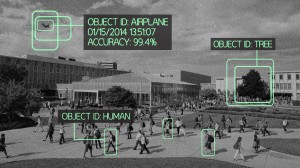BYU’s smart object recognition algorithm, which detects objects in images and video without human help, will be either sold or licensed within the next six months.

According to BYU Technology Transfer Office’s associate director David Brown they have been presenting the algorithm invented by professor Dah-Jye Lee for several months and have received dozens of inquiries and licensing offers.
“We’re talking to two companies, actually one investor and one company,” Lee said. “The investor wants to license the technology. The other company has a specific application they want us to do.”
According to Lee, the company wants to use the algorithm to differentiate between men and women as well as adults and children.
Lee’s algorithm has a variety of uses. One possible use of the algorithm is to trap non-native animals that destroy ecosystems for native animal species.
“We have also used this algorithm to recognize different fish species,” Lee said. “In Utah Lake we have a lot of Asian carp, and they are eating the native species. So we tested the algorithm by collecting images to tell them apart. The idea is to build some sort of mechanism to trap the invasive species.”
The algorithm’s purpose is to detect objects it has learned to find from the examples offered to it. For example, if the algorithm is given enough samples of dogs to analyze, it should be able to find any and all dogs in a picture or in video footage without any human help.
According to Lee’s research assistant, Meng Zhang, an electric engineering major studying for her doctorate, there is still research to be done to improve the algorithm.
“Right now the algorithm can only say, ‘yes’ or ‘no,'” Zhang said. “That is to say, the algorithm can only say what is or isn’t a dog. It can’t say what is a dog and what is a cat.”
Lee wished to clarify that the algorithm is a “big breakthrough in this field,” but it does not have capability to be an all-seeing eye. There are still plenty of possibilities for using the algorithm in various fields.




